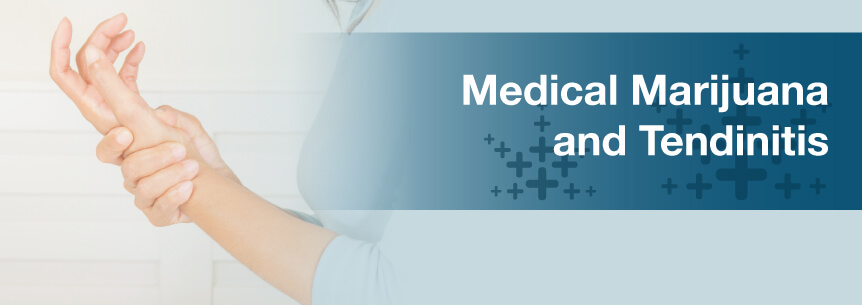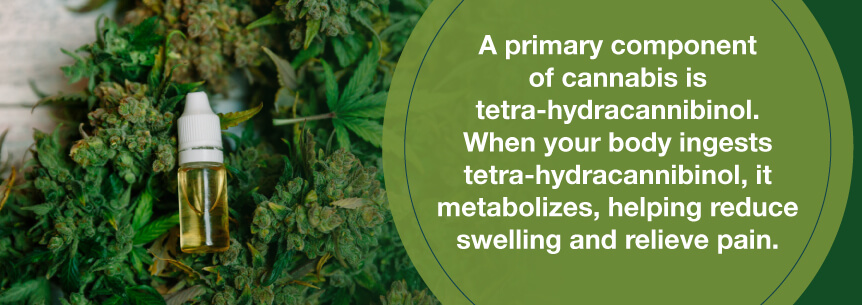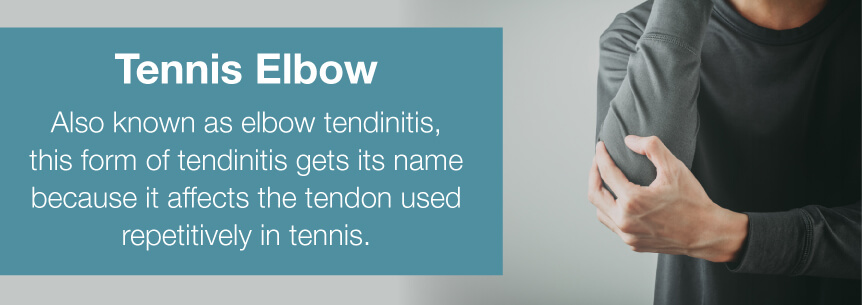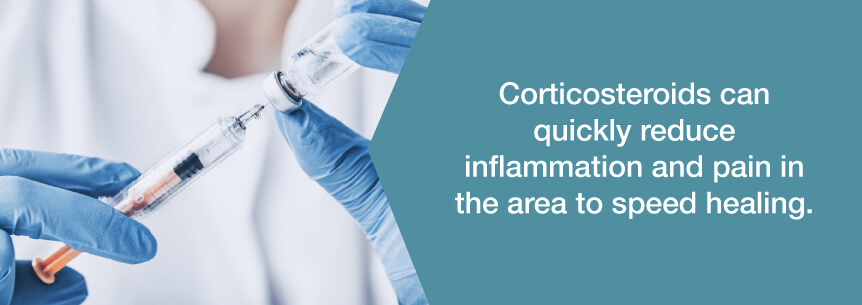
Tendinitis is a common, yet painful, tendon condition that can be acute or chronic. Almost anyone can develop this condition, although it’s most common among “weekend warriors” who exercise or play hard on Saturdays and Sundays. It’s also prevalent in athletes and people with jobs involving repetitive motions.
If you have tenderness and pain in your joints when you move, lift or walk, you may be suffering from tendinitis. Here’s what you should know about what causes it and how it’s treated, including using marijuana for tendinitis.
The endocannabinoid system and cannabinoid compounds are catching some serious attention for restoring and optimizing health and balance related to:
Now, there’s even growing science showing cannabinoids like cannabidiol (CBD) are offering patients relief in the health areas of:
A study showed phytocannabinoids might be helpful in regulating the structure of bone and biomechanical properties. CBD resulted in healing improvements of a rat with femoral leg fractures. The CBD helped with quick healing and stronger callus at the site of injury.
Find A Doctor Find A Dispensary
Symptoms medical marijuana for tendinitis can help treat include:
The treatment goal for tendinitis is to reduce inflammation and relieve pain. And as you probably know, medical weed is already well-known as a pain reliever and anti-inflammatory. Medical cannabis for tendinitis even has similar analgesic effects as morphine. It does all this with no addiction issues and fewer side effects than you get with many medications.

A primary component of cannabis is tetra-hydracannibinol. When your body ingests tetra-hydracannibinol, it metabolizes, helping reduce swelling and relieve pain. Researchers, when testing on animals, found a synthetic form effectively helped with both chronic and acute inflammation. It also prevented the destruction of joint tissue.
Medical marijuana doctors consider the following marijuana strains the best for treating inflammatory disorders like tendinitis.
Strains for inflammation include:
Strains for joint pain include:
Strains for sleep include:
Because medical weed has a wide range of applications, you’ll find it in numerous forms, so you can decide which method of administration works best for your symptoms. When using cannabis and tendinitis strains, the consumption method will affect the duration of the intended result, as well as how long it takes for you to feel the effect.
Some methods of cannabis and tendinitis treatment consumption include:
Topical
You apply medical cannabis topically on the surface of your skin in the form of a:
Topicals provide antibacterial, anti-inflammatory and analgesic effects, but with no psychoactive effects. Once your skin absorbs the CBD topicals, you may begin to feel its pain and muscle-ache-relieving properties in a short period and its inflammatory properties after that.
Smoking
Many patients prefer smoking their marijuana and tendinitis treatment because they feel the effects almost immediately. However, the American Lung Association and other medical organizations discourage this consumption method due to its the potential of increasing your risk for respiratory disease and possible adverse effects it could have on your lungs.
Vaping
Vaping allows you to benefit from medical cannabis without the adverse effects you could experience with smoking. It’s a fairly new method, but it’s growing in popularity, and many people prefer it. Some studies are already supporting its beneficial effects as opposed to smoking. After one month of vaping cannabis, participants in one study showed improved respiratory function.
Edibles
Foods containing marijuana are cooked using butters or oils extracted from the plant. With this method, it gradually takes effect and lasts longer.
Beverages
Brew other parts of the marijuana plant, such as its buds, stem or leaves, to make a medicinal drink.
You don’t have to suffer from the swelling and pain of tendinitis. Cannabis for tendinitis is available, and easy to access through the MarijuanaDoctors.com website. On our website, you can search for a cannabis doctor and a locate a medical marijuana dispensary all in one place.
Marijuana doctors are standing by to help serve you. With just a few clicks of your mouse, we’ll connect you with an online consultation with one of our qualified cannabis doctors, who will give you the recommendation you need to start your medical weed therapy.
Find A Doctor Find A Dispensary
Tendons are thick cords of connective tissue attaching muscle to bone. They work as a pulley to help muscles move joints, but sometimes the tendons become inflamed and tender, developing into a condition called tendinitis. This ailment can happen anywhere on the body with a tendon.
Sometimes tendinitis is the result of a sudden injury, but it’s far more likely to result from repetitive motions due to a hobby or job. Someone who spends too much time typing, for example, can develop tendinitis of the elbow or wrist. Runners may get tendinitis of the Achilles tendon.
People who have poor posture, osteoarthritis or diabetes are prone to tendinitis. Sometimes, certain medication can trigger a tendinitis injury.
You may be at a higher risk of developing tendinitis if you:
You can prevent tendinitis by using the proper technique when performing job activities and repetitive movements, especially during sports.
Because tendinitis refers to inflammation of connective tissue, health care experts divided it into many subtypes based on the affected tendon. Specific types of the condition are classified by the activity causing the strain or the part of the body affected. The following are the five most common forms of tendinitis.

Tendinitis usually causes pain just outside the joint or where the tendon attaches to the bone. Some swelling may be apparent, but you’ll likely have tenderness and pain feeling like a dull ache when you move the joint or body part. You may also experience a loss of motion in the affected joint, especially the shoulder. This condition is called frozen shoulder or adhesive capsulitis.
The difficulties you encounter with the symptoms of tendinitis depend on the type. For instance, someone with golfer’s elbow may have trouble shaking hands or gripping a doorknob, whereas a person with Achilles tendinitis may find it painful to walk up and down stairs.
Surprisingly, tendinitis went undocumented until the 1940s, when German workers first used the term to describe injuries. The condition didn’t receive much attention until the 1980s, when it was used to describe a non-inflammatory condition of the tendons. At this point, Scandinavian authors first used physical therapy to treat the condition, with good results.
Dr. Janet Travell pioneered and popularized the use of corticosteroid injections, now a common therapy for tendon pain.
Tendinitis can be an excruciating condition, making it difficult to perform basic tasks, work and enjoy a full range of motion. If tendinitis continues without proper treatment, you may struggle to perform your favorite hobbies, enjoy sports or even do something as simple as opening a door. These limitations may also lead to depression and difficulty sleeping, especially if the pain keeps you up at night.
If you don’t seek treatment, tendinitis can become chronic. Long-term tendinitis increases the risk of a tendon rupture, which may require surgery. Irritation and inflammation continuing for weeks or months can also lead to tendinosis, a degenerative condition damaging the tendon and causing abnormal blood vessel growth. The chronic pain involved in long-term tendinitis may interfere with sleeping, daily life activities, depression and reduced quality of life.

The good news is, tendinitis can usually be treated effectively with few side effects. Typically, your primary care physician can treat a mild case of tendinitis. In more moderate to severe cases, you may need to see a physical therapist, orthopedist or rheumatologist for a definitive diagnosis and treatment plan.
To diagnose tendinitis, your doctor will perform one or more of the following:
After symptoms begin, you should avoid any activities worsening the problem and allow the tendon to rest. You may apply ice for acute tendon injuries, but you don’t typically use it for long-term tendinitis recovery. If you suffered an injury, doctors advice you to ice the area for a day or two. OTC anti-inflammatory drugs can also help.
If tendinitis does not improve within a week, your physician may recommend physical therapy or corticosteroid injections. Physical therapy, which includes gentle strengthening and stretching exercises, can improve your range of motion. Physical therapy may also include splinting the affected area and soft-tissue massage. Your doctor or physical therapist may also recommend banding, compressing, splinting or bracing your injured area.

Corticosteroids can quickly reduce inflammation and pain in the area to speed healing. In rare cases of severe tendinitis, you may need surgery. If your physician recommends corticosteroids, you will use them on a very short-term basis, because they can come with many side effects. Long-term corticosteroid use can increase the risk of osteoporosis, high blood pressure, diabetes, infection and eye disorders.
With proper exercise and physical therapy, partially torn tendons may take several months to heal and restore their strength. You may need surgery for completely torn tendons.